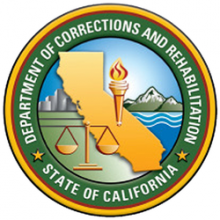CA sex offender laws suddenly shaken up
by James Poulos | May 28, 2014 11:30 am
 Life is about to get a little easier for Californians on the state’s sex offender registry.
Life is about to get a little easier for Californians on the state’s sex offender registry.
Substantial changes to the law are underway at both the legislative and judicial levels. In Sacramento, lawmakers are seriously considering a plan that would pare down California’s sex registry rolls. At the same time, a high-profile court decision has triggered a wave of legal activism successfully targeting city and local ordinances banning offenders from some public areas.
The state’s sex offender registry is overseen by a body known as the California Sex Offender Management Board. In a report issued last month, the Board recommended that the Legislature alter the way it maintains the registry, which has ballooned to nearly 100,000 names. As the San Francisco Chronicle reported[1], the Board reasons that perhaps thousands of registrants “do not necessarily pose a risk to the community,” including about 900 who have not engaged in a sex crime for over half a century.
Registry
California began[2] its sex offender registry in 1947 — the first state to institute such a program. Today, 46 other states have sex registry programs that use[3] a tiered system to differentiate between types of offender, based on factors such as time spent on the registry, risk of re-offense, and the severity of the initial offense.
As legislators expected, however, floating changes to California’s registry process is highly controversial. Assemblyman Tom Ammiano, D-San Francisco, supports the Board’s plan, but admits[4] the mere notion of slimming the registry is “radioactive.”
Opinions may be poised to shift, however. California is one of a handful of states that opted out of the so-called Adam Walsh Child Protection and Safety Act, a registration mandate that included juvenile offenders and was passed[5] by the U.S. Congress in 2006. To secure state compliance, Congress threatened to withhold millions of dollars in federal enforcement grants.
Now, some compliant states are questioning[6] whether the law makes it effectively impossible for once-youthful offenders to reintegrate into society even if they never offend again. The same logic is at work in the recommendations of the California Sex Offender Management Board.
Constitutional questions
Even more important than public opinion, however, is the latest turn of events in the courts. Last month, the California Supreme Court allowed a lower court ruling to stand that struck down local ordinances meant to keep sex offenders away from children in public places. Instrumental[7] in the ruling was the case of a registered Irvine sex offender. By visiting a tennis court at a local park, he violated a local ordinance. Despite pleading guilty, his public defender successfully claimed that state law trumped the ordinance.
In California and other states, public park rules have taken on a strange life of their own. In areas where sex offenders are clustered — thanks to widespread legal restrictions on where they can live — parents have pushed[8] to create public parks simply to keep them away from their children. The strategy underscores a simple yet nettlesome dilemma: pushing sex offenders to the margins of society keeps them at bay in the immediate term, yet increases the kind of nothing-to-lose attitude many communities fear most from predators.
The California Supreme Court’s implicit stance on the matter has emboldened advocacy groups keen on rolling back similar ordinances statewide. An organization[9] called California Reform Sex Offender Laws has contacted cities around the state, warning of federal lawsuits if public-places ordinances are not eliminated or changed.
In response[10], cities in Orange and Kern counties have already taken action or likely soon will. As many as half of Orange County cities have public-park rules of the kind affected by the Supreme Court’s inaction.
The future of California’s approach to sex offenders may depend on the momentum of similar debates in the state over drug crime, punishment, and the possibility of rehabilitation. The constituency supportive of drug abusers is larger and more powerful than the constituency willing to push for an agenda that is, by any measure, softer on sex offenders.
- reported: http://www.sfgate.com/crime/article/Board-wants-to-remove-low-risk-sex-offenders-from-5503219.php#page-1
- began: http://www.meganslaw.ca.gov/sexreg.aspx?lang=ENGLISH
- use: http://www.rawstory.com/rs/2014/05/26/californias-sex-offender-list-is-so-harsh-its-useless-lawmakers-say-as-debate-ramps-up/
- admits: http://sanfrancisco.cbslocal.com/2014/05/26/californias-sex-registry-overhaul-a-radioactive-issue/
- passed: http://www.justice.gov/olp/pdf/adam_walsh_act.pdf
- questioning: http://www.bostonglobe.com/news/nation/2014/05/05/juvenile-advocates-question-sex-offender-registration-laws/OwXFnhTvo8rR4sy2zOzzVO/story.html
- Instrumental: http://www.sacbee.com/2014/04/24/6352316/california-courts-strike-down.html
- pushed: http://www.sfgate.com/default/article/L-A-builds-parks-to-banish-sex-offenders-4352833.php
- organization: http://californiarsol.org/about-us/
- response: http://www.voiceofoc.org/county/article_769cc0bc-d4bf-11e3-ab1f-001a4bcf887a.html
Source URL: https://calwatchdog.com/2014/05/28/ca-sex-offender-laws-suddenly-shaken-up/